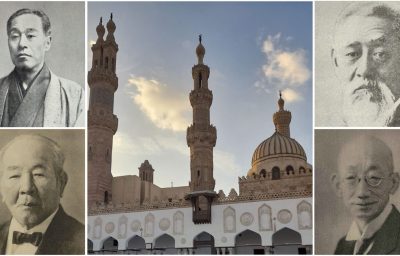COMMUNICATIONS
Cross-cultural Understanding and Resistance: A View from Early Modern East Asian Poetry
I arrived at Nichibunken on July 1, 2021, during a brief interlude between Japan’s 4th and 5th waves of the coronavirus. For non-Japanese nationals like myself, the hurdles imposed by the border control measures were dauntingly high, but thanks to the indefatigable assistance of Director-General Inoue and the staff of the Overseas Research Exchange Office, I finally managed to jump over them all. Although these extra steps delayed my arrival at Nichibunken, I feel extremely fortunate to have made it here to become one of the handful of foreign researchers in residence during the 2021−22 academic year. In the months since then, I have benefited first and foremost from the support of Professor Liu Jianhui, as well as a number of others among the faculty and staff, and have spent many happy days savoring the wealth of resources and scintillating atmosphere of this storied research center. My stay has roughly corresponded to the 5th and 6th waves of the coronavirus, and needless to say, in-person events have remained limited for nearly all of this period. Nevertheless, presentations have been informative and discussions lively during our online seminars and lectures, giving me new ideas potentially applicable to my own research project. In this third year of the pandemic, succumbing to so-called “zoom fatigue” may be inevitable for at least some of us, at least some of the time, but I am hardly alone in giving our contemporary technological wizards their due for enabling us to continue to engage in academic exchange and the pursuit of knowledge under these trying circumstances.
As for my research project, I am currently writing a monograph about poetic genres from across early-modern East Asia that can be considered forerunners of the contemporary practice of what goes under the name of lyrical or affective ethnography. To that end, I have collected a number of relevant examples from Japan of the Edo period, Qing China, and Joseon Korea; while at Nichibunken, my main focus has been on kanshi, kyōka, senryū, and other poetry dealing with local customs and practices from the mid- to late-Edo period, comparing them to the body of work I have already gathered from Chinese and Korean sources. While the penning of lyric poetry to systematically describe the material and cultural practices of other societies, other ethnic groups, or multiple subcultures within one’s own society can be traced back to the Tang dynasty, it became increasingly popular across all of East Asia in the seventeenth to nineteenth centuries. I hope to elucidate both how and why premodern intellectuals chose to employ lyrical genres to articulate cross-cultural knowledge, and to suggest how affectively-attuned ethnography could be further enriched through an appreciation of these relatively hidden literary treasures. I feel deeply grateful to Nichibunken for giving me the opportunity to savor the splendors of East Asian poetry while pondering sociocultural issues that remain relevant and even somewhat contentious in this era of globalization.

Dutch visitors watching tōfu being cut at a teahouse in Gion (Kyoto). From Shūi miyako meisho zue 2, hidari seiryūshu “Niken chaya” (“Illustrations of Historic Places in Kyoto” Database. Nichibunken Collection.




